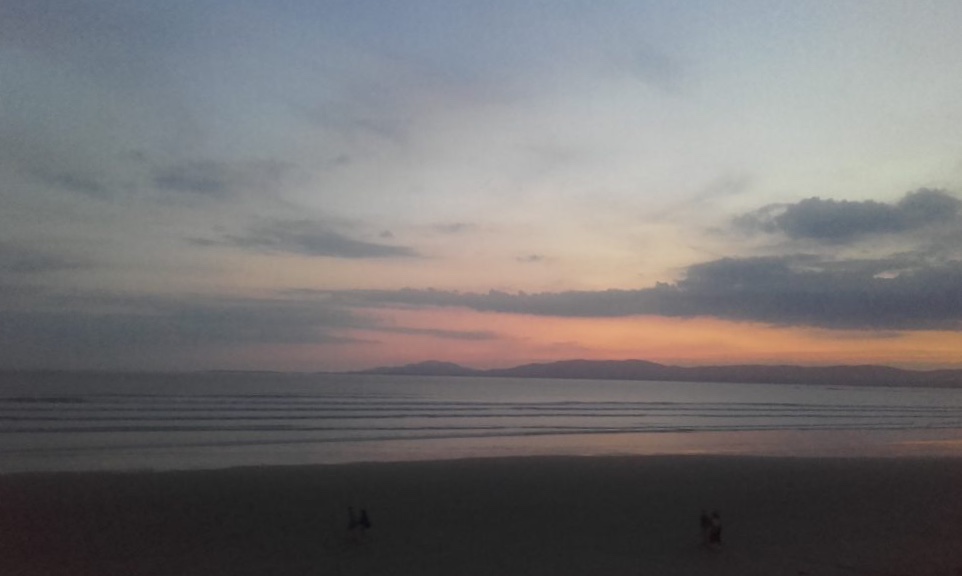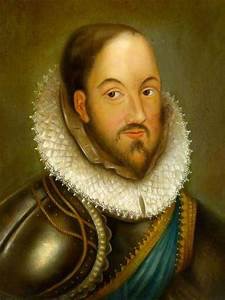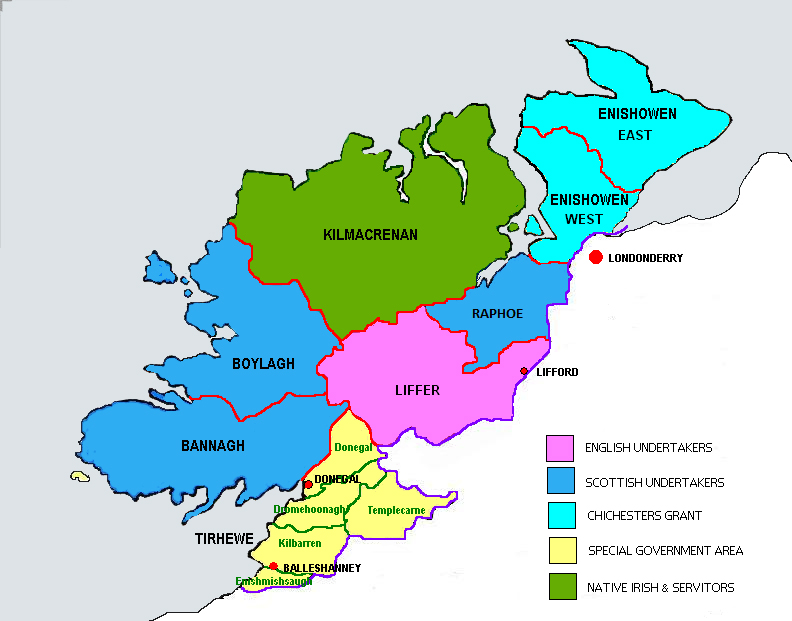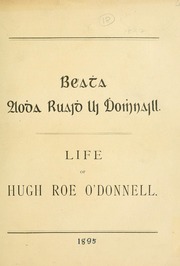Lughaidh Uí Cléirigh (Lewes O’Clery) was the last chief Ollamh to the O’Donnells so was probably one of the last occupiers of Kilbarron Castle. By 1609 he was recorded as living at Rossnowlagh rather than Kilbarron Castle. His public life can be traced during 1603-1616. Here is his story during the times of the Flight of the Earls and the first decade of Plantation of Ulster.


In September 1609 Lughaidh Uí Cléirigh was summoned to Liffer (Lifford) to act as one of the jurors at the inquisition being held in front of the Lord Deputy Sir Arthur Chichester and George Montgomery, Bishop of Derry, Raphoe and Clogher, into the ownership of the various lands in the County of Donegal. The enquiry started on the 12th September and it set out to determine which lands and dues belonged to the Earl Rory O’Donnell, his cousin Niall Garbh O’Donnell. These lands had been confiscated to the Crown at an earlier Inquisition held in 1607 and on which jury Lughaidh had also served upon. Perhaps in hope of saving his own clan’s lands he stated that:
Herenaghs- the sept of the Cleries or freeholds
Kilbarron Parish in the said Barony contains 5 qrs. One of which is herenagh land possessed by the sept of the Cleries as herenagh who pay yearly to the Bishop of Raphoe 13s 4d rent. 6 meathers of butter and 34 of meal, one qr. named Kildonnel(Kildoney?) in possession of the said sept is wholly free from tithes to the bishop, the late abbot of Asheroe was parson and vicar of the said parish in right of his house and received 2/3 of the house in kind, the remainder being payed to the bishop, the church being maintained by both according to the same proportion.
Lughaidh or Lewes in its anglicised form, had been the chief Ollamh to the O’Donnells. An Ollamh was expected to chronicle the history and feats of the clan chieftains usually in verse and act as an adviser to the ruling chieftain. The role was hereditary and Lughaidh was the last of a long line of Uí Cléirighs who served in this role dating back to the mid 14th Century.
With the office came lands to support the role and Lughaidh was head of the senior sliocht or branch of the Uí Cléirighs called the Sliocht Tuathail (the other two being the Sliocht Giolla Riabach and the Sliocht Diarmaida), the latter being the branch of the clan that Mícheál Uí Cléirigh family belonged to.
In the inquisition of 1609 it is stated that Lughaidh was living in nearby Rossnowlagh and not in Kilbarron Castle which may indicate that the castle had been abandoned at this stage. Might it have been destroyed during the Nine Years War?

The clan lands in the parishes of Kilbarron, Inishmacsaint and Drumholm parishes were confiscated and granted to the Bishop of Raphoe and Trinity College. Lughaidh and his brother Seán were considered “deserving Irish” in the Plantation and given 960 acres in the Barony of Kilmacrennan which was reserved for the Gaelic Irish. These lands near Glenswilly included Dromenagh (now Drumenan) and Killomastie (now Killymasny) The grant was to be shared between eleven other people leaving them with less than 100 acres each.
Though most of the land grants were made around 1610, both Lughaidh and his brother Seán are listed as still living in Ballymagroarty and Rossnowlagh respectively in Drumholm parish in the Inquisition of 1613, at which they both acted as Jurors.
Lughaidh wrote a book on the life of Red Hugh O’Donnell who died in Salamanca, Spain in 1602 called the “Beatha Aodh Ruaidh Uí Domhnaill”. The book was probably commissioned by Fionnuala O’Donnell, “Inion Dubh” and it is believed written sometime around 1616. Extracts from the book were later used extensively in the Annals of the Four Masters. The only surviving copy of Beatha Aodh Ruaidh Uí Domhnail is in the Royal Irish Academy in the handwriting of Cú Coigcríche Uí Cleirigh who may have acted as a scribe for his cousin when the book was written.

Lughaidh also took part in a dispute between poets from Munster and Ulster in what became known as the Iomarbhágh na bhFileadh “Contention of the Bards” This debate between the poets started in 1616 and went on until 1624.
In the book called “The O Cléirigh Family of Tír Connaill” by Fr. Paul Walsh, he states that the land grant given to Lughaidh and his brother Séan was for their lives only and by the time Nicholas Pynnar carried out his survey on the progress of the Ulster Plantation in 1619, there is no mention of Lughaidh or Séan and the lands in the barony of Kilmacrennan are in the possession of Sir Paul Gore in the survey.
All this raises the possibility that Lughaidh and his brother Seán never went north to Kilmacrennan to take up their grant. Might they have stayed in their locality near Kilbarron? In Bernadette Cunningham’s book “The Annals of the Four Masters”, it is documented that Mícheál O’Cléirigh used a copy of the Beatha Aodh Ruaidh Uí Domhnaill belonging to Muiris Uí Cléirigh, Lughaidh’s son, who may be the same Muiris who is renting lands at Coolbeg (Keran) townland near Rossnowlagh from Trinity College in 1630. We are told that Lughaidh was living in 1616 when the Beatha Aodh Ruaidh Uí Domhnaill was written and it is likely that he died sometime before 1623 when Br Mícheál O’Clery returned to Ireland from Louvain or else, due to his status, he would have been involved in the various projects being undertaken by Br Mícheál.
